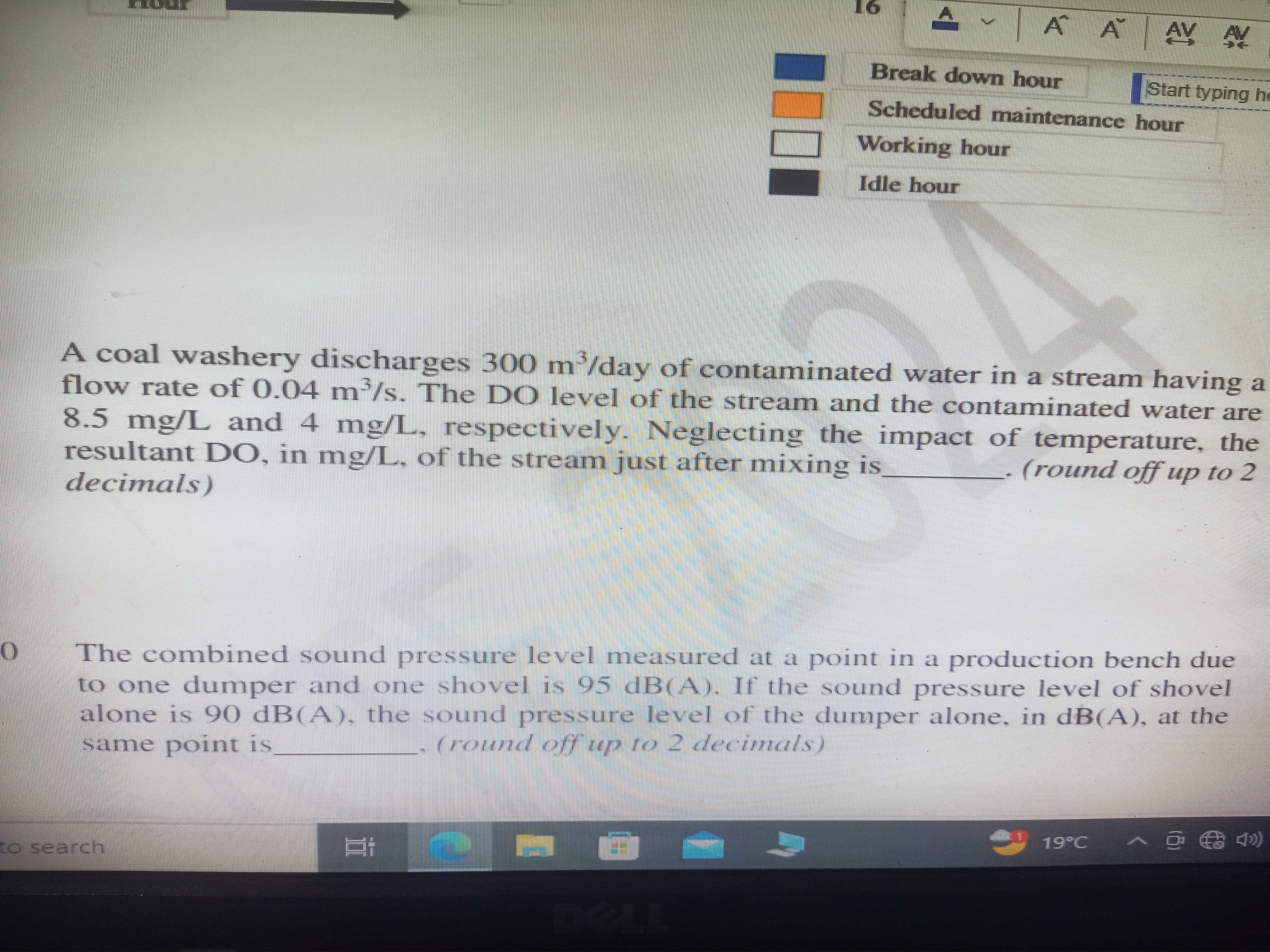A coal washery discharges 300 m³/day of contaminated water in a stream having a flow rate of 0.04 m³/s. The DO level of the stream and the contaminated water are 8.5 mg/L and 4 mg/... A coal washery discharges 300 m³/day of contaminated water in a stream having a flow rate of 0.04 m³/s. The DO level of the stream and the contaminated water are 8.5 mg/L and 4 mg/L, respectively. Neglecting the impact of temperature, the resultant DO, in mg/L, of the stream just after mixing is __________ (round off up to 2 decimals).

Understand the Problem
The question is asking how to calculate the resulting Dissolved Oxygen (DO) levels in a stream after mixing with contaminated water. It provides initial DO levels and flow rates for both the stream and the discharged water as needed for the computation.
Answer
$8.13 \text{ mg/L}$
Answer for screen readers
The resultant DO of the stream just after mixing is approximately $8.13 \text{ mg/L}$.
Steps to Solve
- Convert flow rates to compatible units The flow rate of the stream is given in m³/s. We need to convert the discharge of the contaminated water from m³/day to m³/s.
To convert: [ 300 \text{ m}^3/\text{day} \times \frac{1 \text{ day}}{86400 \text{ seconds}} \approx 0.003472 \text{ m}^3/\text{s} ]
- Calculate the total flow rate after mixing The total flow rate ($Q_{total}$) is the sum of the flow rates of the stream ($Q_{stream}$) and the contaminated water ($Q_{contaminated}$).
[ Q_{total} = Q_{stream} + Q_{contaminated} = 0.04 \text{ m}^3/\text{s} + 0.003472 \text{ m}^3/\text{s} \approx 0.043472 \text{ m}^3/\text{s} ]
- Calculate the total amount of DO in each water source The total dissolved oxygen for both the stream and the contaminated water can be calculated as:
[ DO_{total , stream} = DO_{stream} \times Q_{stream} = 8.5 \text{ mg/L} \times 0.04 \text{ m}^3/\text{s} ] [ DO_{total , contaminated} = DO_{contaminated} \times Q_{contaminated} = 4 \text{ mg/L} \times 0.003472 \text{ m}^3/\text{s} ]
Calculating these gives: [ DO_{total , stream} \approx 0.34 \text{ mg/s} ] [ DO_{total , contaminated} \approx 0.013888 \text{ mg/s} ]
- Calculate the total DO after mixing Now, sum the total DO amounts:
[ DO_{total} = DO_{total , stream} + DO_{total , contaminated} \approx 0.34 \text{ mg/s} + 0.013888 \text{ mg/s} \approx 0.353888 \text{ mg/s} ]
- Calculate the resultant DO concentration in mg/L The resultant DO concentration can be found by dividing the total DO by the total flow rate:
[ DO_{resultant} = \frac{DO_{total}}{Q_{total}} = \frac{0.353888 \text{ mg/s}}{0.043472 \text{ m}^3/\text{s}} \approx 8.13 \text{ mg/L} ]
- Round to two decimal places Finally, rounding the result:
[ DO_{resultant} \approx 8.13 \text{ mg/L} ]
The resultant DO of the stream just after mixing is approximately $8.13 \text{ mg/L}$.
More Information
This calculation shows how the mixing of water with different dissolved oxygen levels affects the overall DO concentration in the stream. It's important in environmental science to assess the impact of contaminants on water quality.
Tips
- Incorrect unit conversion: Always ensure that flow rates are in the same consistent units (m³/s).
- Neglecting to sum the flow rates correctly: Make sure all flow rates are properly added for the total flow rate after mixing.
AI-generated content may contain errors. Please verify critical information